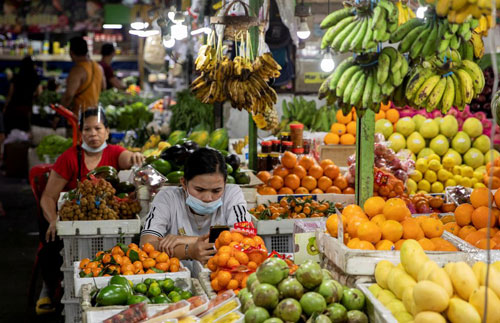The consumer sentiment in the country was more pessimistic in the third quarter of this year as the overall confidence index (CI) declined to -12.9 percent from -5.2 percent in the previous quarter, the Banko Sentral ng Pilipinas over the weekend said.
“The decline in the index in Q3 2022 relative to the previous quarter indicates that the number of households with pessimistic views increased and continued to outnumber those with optimistic views,” BSP said.
The central bank explained that, based on the survey respondents, the weaker confidence among consumers was largely due to their concerns over the: faster increase in the prices of goods and higher household expenses, low income, and fewer available jobs and working family members.
The sentiment of consumers, however, was more optimistic for Q4 2022 and the next 12 months as the CIs increased to 13.4 percent and 33.4 percent respectively.
The improvement in confidence among consumers is attributed to their expectations of: more available jobs, additional income, good governance, effective government policies and programs by the new administration for agriculture, education, and economic recovery from COVID-19, and the provision of pension and financial assistance.
The more pessimistic consumer outlook in Q3 2022 was reflected across the three component indicators of consumer confidence, with the family financial situation recording the lowest CI, followed by economic condition and family income.
Consistent with the national trend, consumer confidence across all income groups also weakened in Q3 2022. Aside from the reasons previously cited for the more pessimistic outlook in Q3 2022, high-income consumers were also worried about the continuing public health risk posed by the COVID-19 pandemic and its possible adverse impact on the economy.
By geographical location, the consumer confidence in both the National Capital Region (NCR) and Areas Outside the NCR (AONCR) was more pessimistic in Q3 2022, which is consistent with the national trend.
In addition to the reasons earlier cited by consumers for their more pessimistic outlook in Q3 2022, respondents in AONCR attributed their weaker confidence to their concerns over the ongoing travel and social gathering restrictions and the uptick in the country’s COVID-19 caseload.
The percentage of households in the country that considered Q3 2022 as a favorable time to buy big-ticket items fell to 14 percent from 15.2 percent in Q2 2022.
The percentage of households with savings in the nation declined to 27.5 percent from 29.7 percent in Q2 2022.
24.9 percent availed of a loan in the last 12 months, slightly higher than the 24.7 percent recorded in Q2 2022.
Consumers anticipated that interest rates may increase, the peso may depreciate against the
US dollar, and the unemployment rate may decline in Q3 2022, Q4 2022, and the next 12 months.
Households also expected that the rate of increase in the prices of consumer goods and services may rise in Q3 2022 and for Q4 2022. This stemmed from their concerns over: higher household spending for food, utilities and other commodities, limited supply of goods and services, and depreciation of the peso against the US dollar.
However, households expected that inflation rate may ease for the next 12 months due to the following factors: effective government policies and programs, sufficient supply of goods and services, lower household spending on food, appreciation of the peso, and positive developments in the COVID-19 situation.
In particular, consumers expected that the inflation rate may settle slightly above the upper end of the government’s inflation target range of 2 to 4 percent for 2022 and 2023 – at 4.1 percent for the next 12 months.
The Q3 2022 CES was conducted during the period 1 to 13 July 2022. In Q3 2022 CES, 5,546 households were surveyed – 2,806 (50.6 percent) were from the NCR and 2,740 (49.4 percent) from AONCR.




